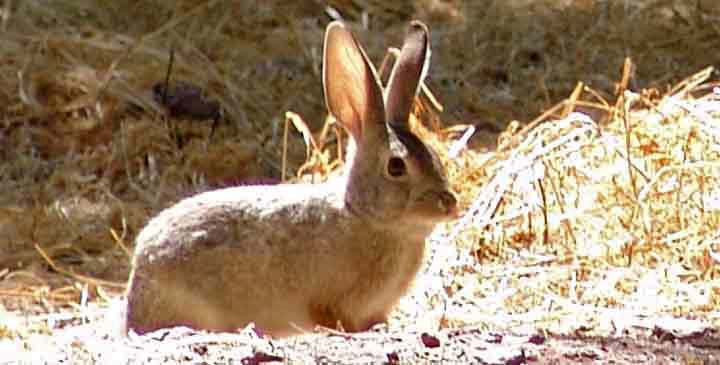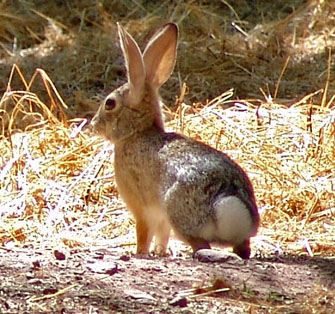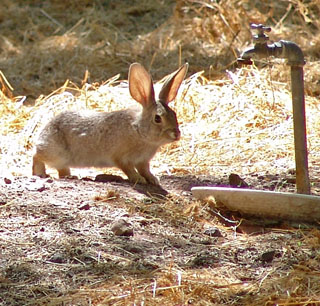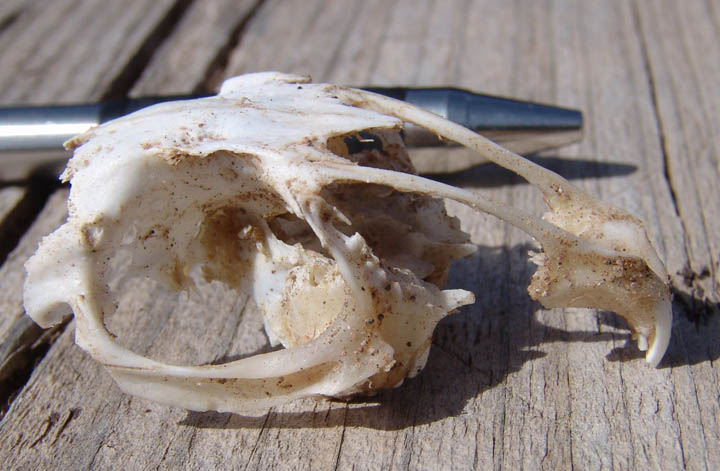
Desert Cottontail Rabbit (Sylvilagus audubonnii)
Main sources: Merlin, Pinau & Peter Siminski, "Rabbits and Hares", in Steven Phillips and Patricia Comus, eds., 2000, A Natural History of the Sonoran Desert, pp. 493-5, Arizona-Sonora Desert Museum Press, Tucson.
The Desert Cottontail is readily visible in our desert, though it is small (1-2 lbs). It is grey in color, with a white "puffball" tail, and it prefers thick, brushy locations, where it mainly rests in hideouts by day and searches for food by night. These rabbits have small home ranges (some 400 yards in radius), where they "forage on almost anything green", including (in times of drought) plants containing harsh chemicals (Pinau & Siminski, cited above, p. 494). While we often see them in the same areas occupied by the Blacktailed Jackrabbit, these two mammals contrast sharply not only in appearance, but also in behavior and habitat. (See the link just indicated to pursue the comparison.) Cottontail bodies are much smaller and their ears are even proportionally smaller, and the Cottontail's tail is quite distinctive (giving the animal its name), as you can see below left. The legs are proportionally shorter, as shown below right. (Click on each image to enlarge it.) This cottontail, though standing in relatively open space, has thicket close by, where it will run at any alarm. They can scamper very quickly.
 ..
..
Despite their good eyesight and hearing, and quick movements, Cottontails are heavily preyed upon by our desert carnivores, and their compensation for rapid mortality is very rapid reproduction: females can breed at age three months (these rabbits breed mainly in spring and summer), gestate for just about a month, typically have at least 2 litters per year, and the young (though born blind, naked, and helpless) suckle to mature quickly and leave the nest after two weeks.
Below, a remnant of a Cottontail skull, missing mandible and the back of the braincase. The size is a bit more than 2 inches long. Found on a high terrace of lower Hot Springs Canyon on March 19, 2008, this rabbit was killed and its head eaten there very recently, probably by a resident hawk. Note the double upper-incisor at far right, sure indicator of a member of the Lagomorph Order of Mammals (see that Order on the Mammals page for more details on identification).

Return to Mammals